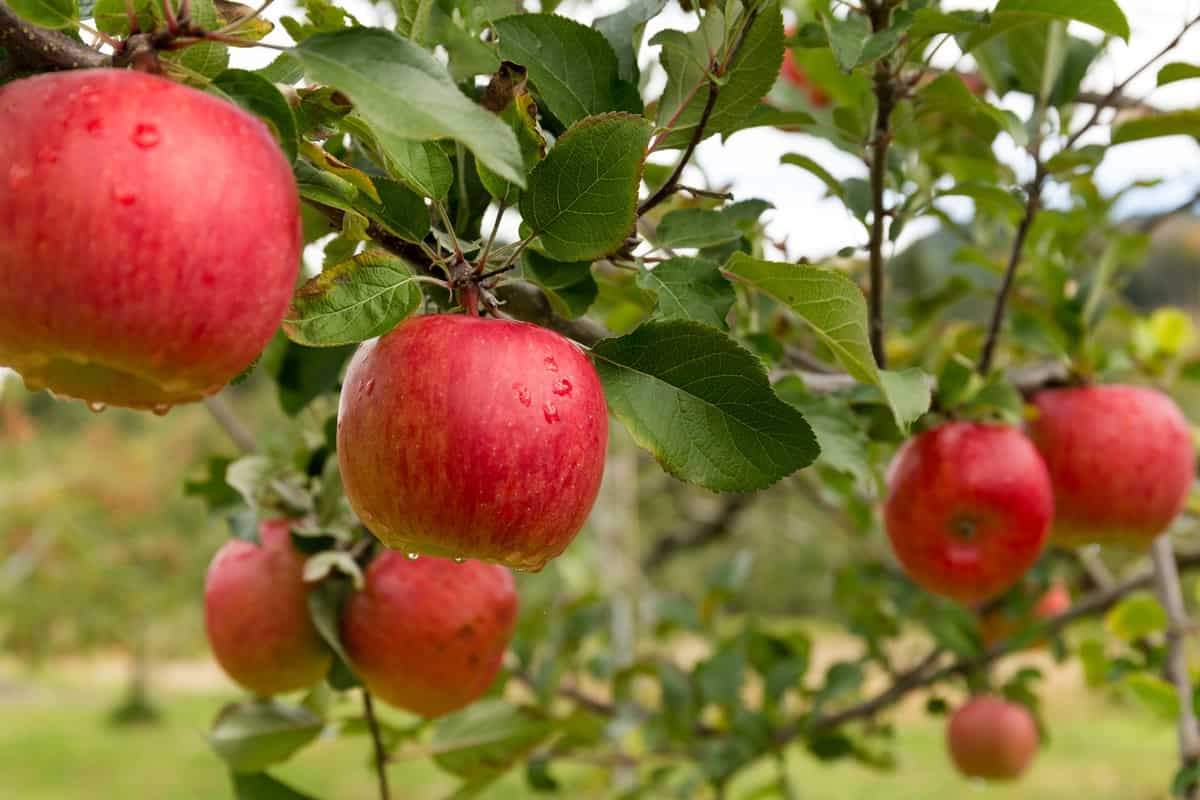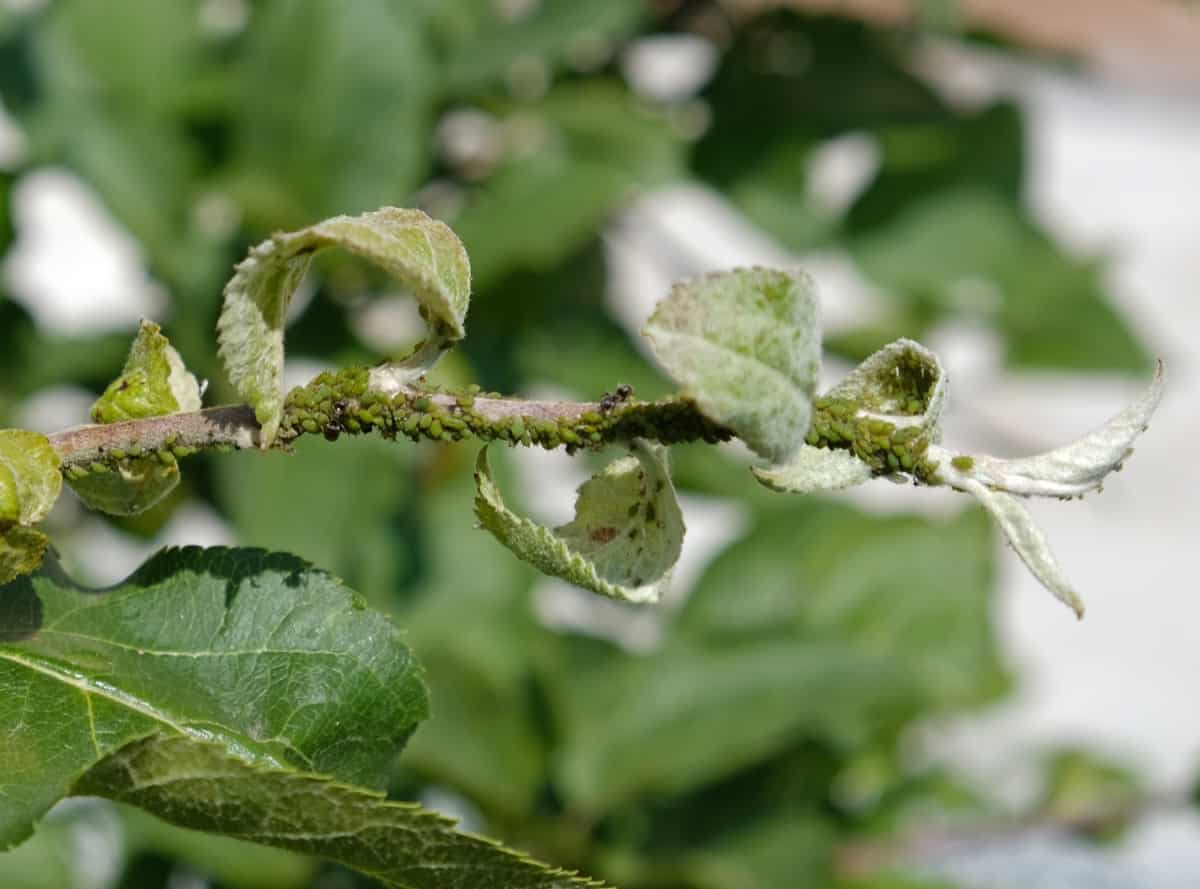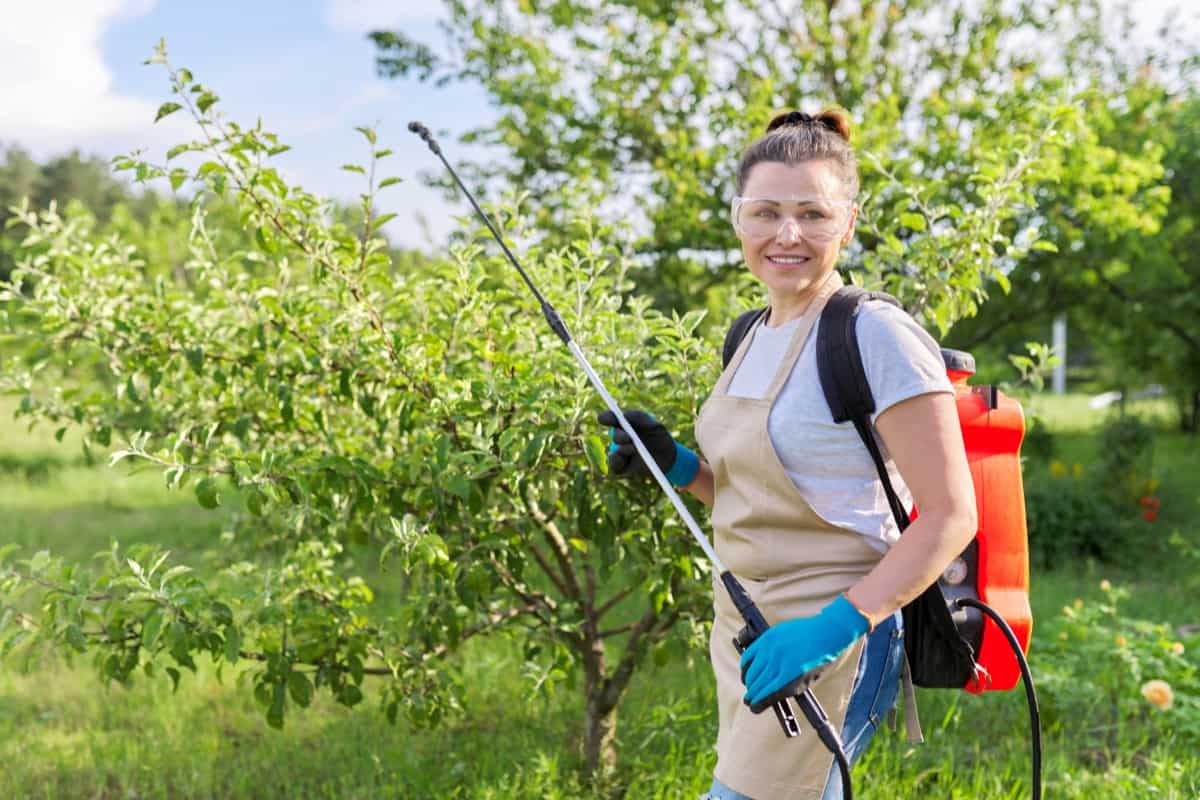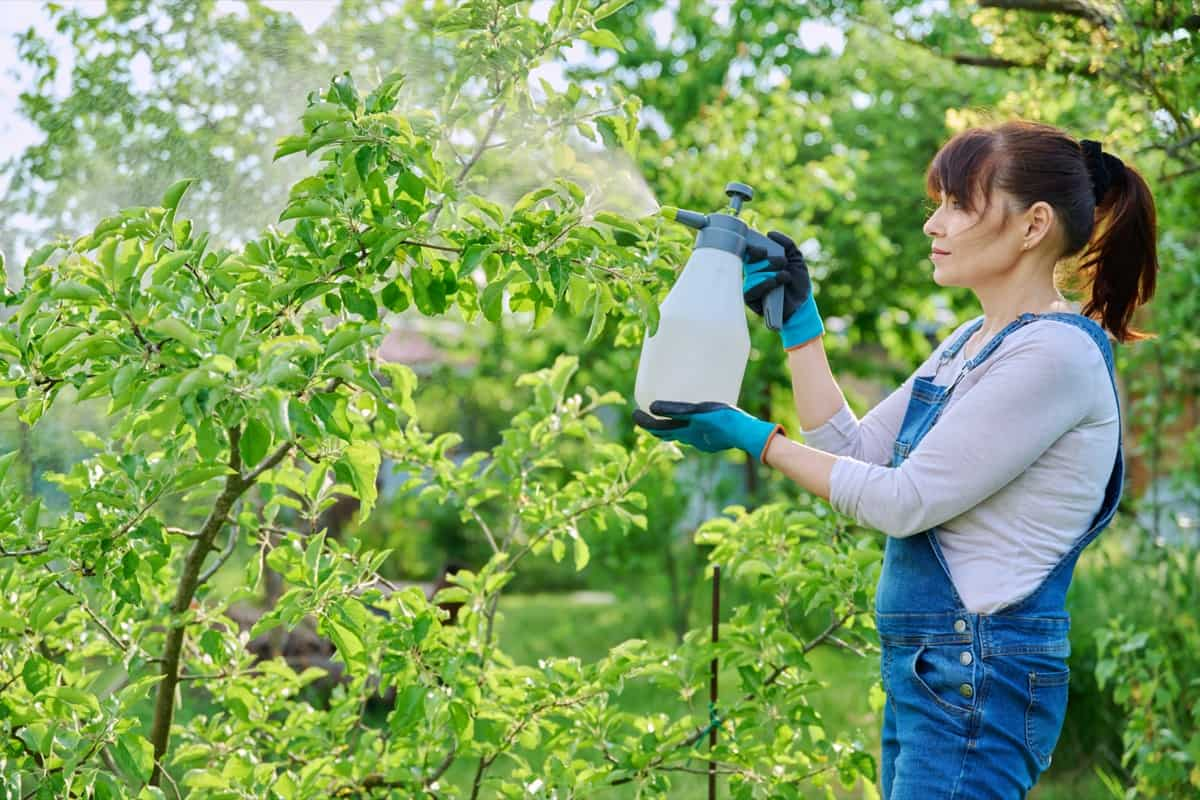Effective apple pest control through natural and organic treatments is both eco-conscious and sustainable. This guide explores various methods to safeguard your apple trees without using synthetic chemicals. From beneficial insects and companion planting to homemade remedies like neem oil and garlic sprays, these environmentally friendly approaches help maintain tree health while minimizing environmental harm.

By embracing these natural solutions and good gardening practices, you can enjoy bountiful, pesticide-free apple harvests while promoting a thriving and balanced ecosystem in your orchard.
How to Control Apple Pests
Apple Pests: Identifying the Most Common Pests and Their Impact on Your Crop
- Apple Maggot: These tiny flies are the major insect pest of apples. They lay eggs in developing fruit, causing tunneling damage and rendering apples inedible.
- Codling Moth: Larvae tunnel into apples, leaving behind brown frass and making fruit susceptible to diseases.
- Aphids: These sap-sucking insects weaken apple trees and transmit viruses.
- Spider Mites: They feed on apple leaves, causing stippling and reducing photosynthesis.
- European Apple Sawfly: Larvae tunnel into fruit, causing damage and fruit drop.
- Woolly Apple Aphid: These aphids produce a white, waxy substance on branches and roots, weakening the tree.
Natural and Organic Methods for Controlling Apple Pests: An Overview
Natural and organic methods for controlling apple pests offer sustainable and eco-friendly alternatives to conventional chemical pesticides. These approaches prioritize using beneficial insects, such as ladybugs and parasitoid wasps, to control harmful pests and employ organic pesticides derived from botanical extracts or microbes.
Additionally, cultural practices like proper orchard sanitation and crop rotation are pivotal in pest management. By minimizing environmental harm and preserving the health of apple trees, these methods ensure the production of healthier and safer apples while safeguarding the long-term well-being of ecosystems.
Using Neem Oil to Control Apple Pests: A Safe and Effective Method
It is a natural pesticide derived from the neem tree’s seeds and leaves. It is a deterrent and disrupts the life cycle of apple-damaging insects like aphids, caterpillars, and mites. Neem oil is non-toxic to humans and wildlife, making it eco-friendly. To use, dilute neem oil with water and spray it on apple trees regularly, especially during the growing season. It not only protects apples but also maintains the overall health of the tree. This method promotes sustainable pest control while safeguarding your apple harvest and the environment.
In case you missed it: How to Control Houseplant Pests: How to Get Rid of Them with Natural and Organic Treatment

The Role of Beneficial Insects in Controlling Apple Pests: Introduction of Predatory Insects
Predatory insects, like ladybugs, lacewings, and parasitic wasps, are essential allies in apple orchards. They help maintain ecological balance by preying on common apple pests like aphids, caterpillars, and mites. This natural pest control approach reduces the need for chemical pesticides, preserving the fruit’s quality and minimizing environmental harm.
Integrating predatory insects into apple orchards promotes healthier ecosystems, enhances crop yields, and supports long-term agricultural sustainability, making them indispensable contributors to apple pest management strategies.
Companion Planting: How Planting Certain Plants Together Can Deter Apple Pests
Companion planting is a natural pest management strategy that harnesses the synergy between specific plants to deter apple pests. Planting aromatic herbs like basil and mint alongside apple trees can mask the scent of the apples, making it harder for pests like aphids and codling moths to locate their target.
Additionally, marigolds and nasturtiums can act as deterrents, repelling harmful insects with their pungent odors. This interplanting discourages pests and promotes biodiversity and healthier ecosystems in the orchard, reducing the need for chemical pesticides while enhancing apple yields.
Crop Rotation: How Rotating Your Apple Crop Can Help Control Pests
Pests often target specific plant families, and rotating crops break this cycle. For instance, if apples are grown in one area one year and then rotated to a different part of the farm the next, pests that thrived on apples won’t find their preferred host, reducing their population. Additionally, different crops may attract diverse predators or pathogens, further mitigating pest pressure. Crop rotation promotes healthier soil and minimizes the need for chemical pesticides, making it a sustainable and natural method for pest control in apple orchards.
Using Diatomaceous Earth to Control Apple Pests: A Non-Toxic and Organic Method
Diatomaceous Earth (DE) offers an effective, non-toxic, and organic solution for controlling apple pests. DE consists of fossilized algae with razor-sharp edges that create a barrier against crawling insects like aphids, mites, and caterpillars when applied to apple trees. These microscopic abrasive particles pierce the pests’ exoskeletons, causing dehydration and death. DE is safe for humans, animals, and beneficial insects, making it eco-friendly. Its natural composition ensures no harmful chemical residues on apples, promoting organic farming practices.
In case you missed it: How to Manage Pest and Diseases in Papaya: Symptoms, Treatment, Control, and Prevention

Traps and Barriers: How to Use Traps and Barriers to Control Apple Pests
Traps and barriers are effective tools for managing apple pests. Pheromone traps lure male insects, disrupting mating cycles. Sticky traps catch crawling pests like aphids. Physical barriers like row covers prevent access to fruit. Surrounding trees with a band of sticky material, like Tanglefoot, deters crawling insects. Additionally, creating a moat or trench around the orchard filled with water inhibits ground-dwelling pests. Employing these traps and barriers can reduce the need for chemical pesticides, promoting eco-friendly pest control while safeguarding apple crops.
Biological Control: How to Use Parasitic Wasps to Control Apple Pests
These beneficial insects lay their eggs inside pest larvae, such as codling moths or aphids, effectively eliminating them. To implement this method, release parasitic wasps when pests are most active, usually in early spring or summer. Ensure the wasps’ habitat is suitable by providing nectar-rich flowers nearby for adult wasps to feed on.
Monitor pest populations regularly to assess the effectiveness of this natural control method. By harnessing the predatory behavior of parasitic wasps, apple growers can reduce the need for chemical pesticides and promote sustainable orchard management.
Integrated Pest Management (IPM): A Holistic Approach to Controlling Apple Pests
Integrated Pest Management (IPM) is a comprehensive strategy for managing apple pests sustainably. It combines various eco-friendly techniques to minimize pest damage while preserving ecosystem balance. IPM includes monitoring pest populations, using natural predators, employing disease-resistant apple varieties, practicing crop rotation, and employing targeted pesticide applications as a last resort.
By prioritizing prevention and minimizing environmental impact, IPM safeguards apple crops, reduces chemical use, and supports long-term orchard health, ensuring a more sustainable and resilient approach to pest control in apple farming.
Table for Apple Pest Control with Natural and Organic Treatment
| Pest | Natural and Organic Treatment |
| Aphids | water and liquid soap solution Ladybugs, lacewings, or parasitic wasps |
| Codling Moth | Use pheromone traps Release Trichogramma wasps |
| Apple Maggot | Hang sticky traps. Apply kaolin clay |
| Spider Mites | Spray a strong stream of water. Keep the orchard area weed-free |
| Japanese Beetles | Use pheromone traps Use Neem oil or insecticidal soap. |
In case you missed it: How to Identify and Treat Croton Diseases: Damage Symptoms, Prevention, and Control

Conclusion
In conclusion, managing apple pests with natural and organic treatments is environmentally friendly and promotes healthier, pesticide-free fruit. Remember that a holistic approach, including proper tree care and regular monitoring, is key to successfully managing pests organically and sustainably.
- Deworming Schedule for Dogs/Puppies: A Beginners Guide
- How to Prevent and Control Parasites in Goats
- Beneficial Insects in Pest Management
- Natural Solutions for Pest Control in Flower Gardens
- Types of Fungicides Used in Agriculture
- Common Issues in the Fruit Development Stage of Pomegranate Farming
- Fruit Development Issues in Papaya: Easy Solutions and Treatment
- Soil-Borne Diseases and How to Protect Your Plants
- Practices to Prevent Disease Spread in the Garden